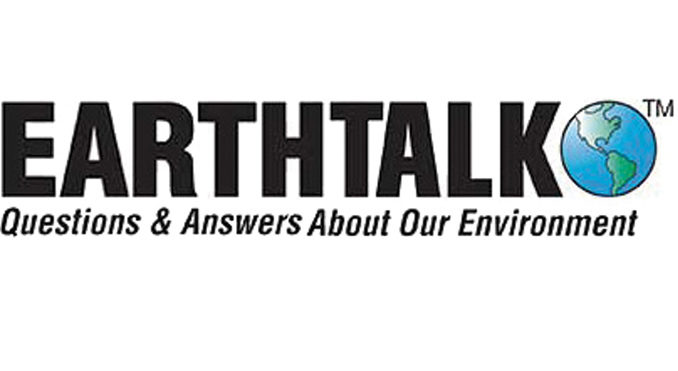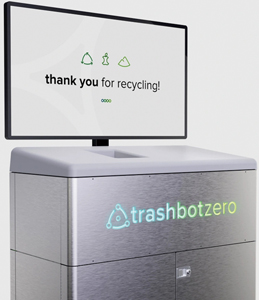
Dear EarthTalk: How are recent heat waves around the world affecting wildlife? ~ T.C., via email
It would be hard to ignore the heat waves that have plagued North America, Europe and Asia in recent months. If you did not experience them yourself, chances are that you read about them, or their effects. Abnormal thermal extremes like this have become more regular, intense and long-lasting over the last few decades as global temperatures have risen. In addition to their severe consequences for vulnerable human communities, heat waves have a drastic effect on many wildlife populations. While there is no one single consequence felt by all wildlife populations, heat waves universally disrupt the ecosystems where they occur, which, due to the interconnectedness of biodiversity, has implications for all living things.
Heat waves are different from the rising global average temperature. They are the peak, extreme, temperatures that happen for a finite duration of time. If the global average temperature warms by 4.4 C (the highest emission scenario projected by the Intergovernmental Panel on Climate Change (IPCC), 41 percent of species will experience extreme heat waves. But if global average temperature maxes out at 1.8 C of warming (the IPCC identifies 1.5C of warming to be the lowest emissions scenario), only 6.1 percent of species will experience extreme heat waves.
In any circumstance, the change in wellbeing or population size of one species in a local area sets off a ripple effect in that ecosystem. The secondary consequences of heat waves’ effect on oyster populations are a case in point. Heat waves reduce oyster population size as oysters are a stationary species and cannot move from uninhabitable water temperatures. When at a healthy population size, oysters limit algal bloom and are thus key to ensuring consistent oxygen levels in bodies of water. Therefore, experts warn of consequences for other marine animals in those bodies of water now faced with reduced oxygen levels.
Some wildlife populations, particularly insects, have actually increased in size due to heat waves over the last few decades. The length of mosquito season has increased in some parts of the world by 30 days or more over the last four decades, spiking reproduction rates and therefore population size. However, for some regions in the Southern hemisphere that are already very hot, increased temperature and dryness has actually shortened mosquito season, prompting a dip in reproduction rates.

In addition to mass mortality events, certain wildlife populations have been forced to migrate or change existing migration patterns. In the ocean and other bodies of water, the phenomenon that occurs when species migrate due to temporary changes in ocean surface temperatures caused by marine heatwaves is called thermal displacement. Some groups of non-stationary species like whales or sea turtles have moved tens of thousands of kilometers to reach a new region at their preferred temperature. This changes the food chain and equilibrium of the ecosystem they have moved to and that they have moved from.
Ultimately, global average temperature rise will have many of the same effects on wildlife populations, but recent heat waves have had large effects in a small fraction of the time. Limiting global average temperature rise will limit the extremity of heat waves and reduce potential consequences for wildlife.
CONTACTS: Mitigation pathways compatible with 1.5°C in the context of sustainable development, .ipcc.ch/sr15/chapter/chapter-2/; With Temperatures Rising, Can Animals Survive the Heat Stress? e360.yale.edu/features/with-temperatures-rising-can-animals-survive-the-heat-stress.
_______________________________________________
Dear EarthTalk: How are AI and robotics combining to revolutionize recycling? ~ B.C., New York, NY
A survey conducted by the Carton Council of North America in 2018 showed that 94 percent of Americans support recycling. That same year, the Environmental Protection Agency (EPA) reported that the recycling rate was only 32.1 percent. Why is this the case?
Local governments are responsible for creating recycling programs. Cities that have invested in recycling infrastructure, education and incentive programs, like San Francisco and Los Angeles, claim recycling rates of over 70 percent. Contrarily, cities with smaller budgets and staff and contamination issues have eliminated curbside recycling altogether. (Chesapeake, VA Pembroke Pines, FL are two examples.)
The adoption of single-stream recycling, where various recyclables are placed in a single container, has significantly increased household participation. But it has also contributed to a 25 percent contamination rate of recycled material. Contamination occurs when non-recyclable items are mixed with recyclables, making it challenging or impossible to sort and safely process these materials. Common contaminants include non-recyclable plastics (bubble wrap, trash bags, cling wrap, etc.) and food residue.
Contamination is more than a mere inconvenience. In 2016, China received over 16 million tons of plastic, paper and metals from the U.S., 30 percent of which was contaminated and later dumped in the Chinese countryside and waterways. In 2017, China passed the National Sword Policy, banning the importation of materials that the U.S. had previously sent in for recycling. As a result, U.S. recycling facilities have had to make substantial improvements in the quality of their recyclables.

How does AI play a role in improving recycling? The 1990s saw the introduction of optical sensing and computational intelligence to distinguish between various types of plastic and paper. These systems typically achieved 80 to 95 percent purity, with human workers tasked to manually remove contaminants. Enter artificial intelligence! Recycling requires rapid identification of objects with diverse shapes, sizes and orientations on conveyor belts. AI-driven systems demonstrate near-100-percent accuracy by relying on image analysis of attributes, including color, opacity and form. A vast dataset of recyclable material images, collected globally and meticulously annotated, are regularly updated to improve reliability.
One company, AMP Robotics, has pioneered in the AI-recycling industry since 2014. Equipped with a powerful network, their 1,800 pound ‘pick-and-place’ robots are twice as efficient as human employees, identifying and sorting 80 items per minute. Now recycling facilities equipped with artificial intelligence robots are able to sort greater quantities of trash while reducing operating costs.
Perhaps we can even stop contamination at the point of disposal, right at home. CleanRobotics has created a receptacle named TrashBot that uses imaging, AI algorithms, and robotics to detect and sort waste as it is being thrown away. This prevents contamination and makes the sorting process easier down the line.
CONTACTS: TrashBot uses AI to sort recyclables, https://techcrunch.com/2022/08/12/trashbot-uses-ai-to-sort-recyclables/; Rise of the Recycling Robots, https://www.forbes.com/sites/kenrickcai/2020/11/12/rise-of-the-recycling-robots/?sh=6d1f70d565f9; Why the Current U.S. Recycling Programs Are Inefficient, https://gwchronicle.com/1783/opinion/why-the-current-u-s-recycling-programs-are-inefficient/.
_______________________________________________
Dear EarthTalk: My kitchen is overdue for an update. I’m wondering what’s the latest, greatest and greenest today in countertop materials, flooring, paint and appliances? ~ H. Barton, via email
Kitchens have traditionally had one of the worst environmental footprints in the home. However, technological advancements have brought more eco-friendly materials and tools for greener kitchens. Choose components wisely and you can do the planet a favor while you make the most lived-in room in the house better for everyone.

The first place to start thinking greener is paint. Conventional paint, especially oil-based varieties, contains lots of volatile organic compounds (VOCs). These are off-gassing synthetic chemicals that not only can cause human health issues like headaches and nausea and have been linked to some cancers and also contribute to the build-up of ground-level ozone, a noxious pollutant in its own right. If you want to avoid VOCs in your new kitchen, paint it with water-based paints bearing either the Greenguard or Green Seal logos—these certifications ensure the paint in the can has little if any VOCs. Popular eco-friendly brands include AFM Safecoat, ECOS Paints, Bioshield and Behr Premium Plus.
Countertops are another kitchen area where we’ve come a long way with eco-friendly options. Teragren’s “carbon-negative” counters are made of bamboo, which grows quickly and sequesters carbon dioxide in the process. Another great green choice for counters is Greenguard-certified Grenite, which uses recycled quartz, ceramics and acrylic to create countertops that are affordable and resistant to heat, stains and scratches. If you’re looking for a colorful or more distinct option, take a look at Richlite, also certified by Greenguard as well as the Forest Stewardship Council (FSC). This innovative material is created by stacking recycled paper sheets, saturating them with phenolic resin, and applying heat and pressure.
Eco-conscious choices now also abound in flooring. Bamboo works as well on floors as countertops. Another increasingly popular green flooring option is cork. Contrary to hardwood, production of cork only requires the outer bark of a tree. Cork contains a natural waxy substance called suberin that prevents water and gasses from penetrating through. Accordingly, cork flooring offers excellent insulation, energy conservation, durability of up to 30 years, and natural hypoallergenic and insect-repellent properties. However, cork floors are often stained and coated, so look out for VOCs in the additives. Yet another great green choice for kitchen floors is Marmoleum, a naturally germicidal, waterproof and VOC-free form of linoleum composed of 97 percent natural material.
Upgrading to modern, energy-efficient appliances is another way to make your kitchen remodel pay dividends for the planet. Keep an eye out for appliances bearing the EnergySTAR certification, which ensures that the appliance you are eyeing meets or beats U.S. Department of Energy standards for energy efficiency. This will help lower your greenhouse gas emissions and also reduce your energy bill. Another earth-friendly upgrade would be to ditch the gas stove for an all-electric induction model; you’ll not only lower your carbon footprint but also probably improve the indoor air quality inside your home.
CONTACTS: UL GREENGUARD Certification, https://www.ul.com/services/ul-greenguard-certification; Forest Stewardship Council (FSC), https://fsc.org; EnergySTAR, https://www.energystar.gov/; Teragren, https://teragren.com; Grenite, https://grenite.com.
_______________________________________________
EarthTalk® is produced by Roddy Scheer & Doug Moss for the 501(c)3 nonprofit EarthTalk. See more at https://emagazine.com. To donate, visit https://earthtalk.org. Send questions to: question@earthtalk.org.

